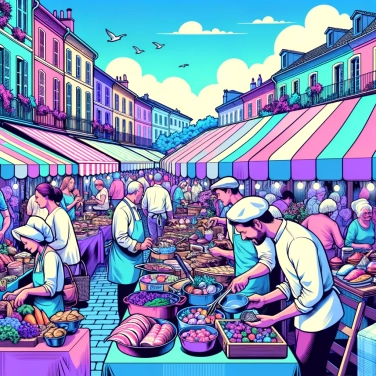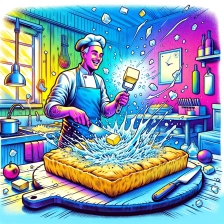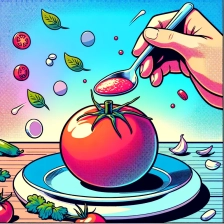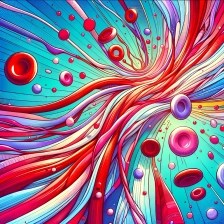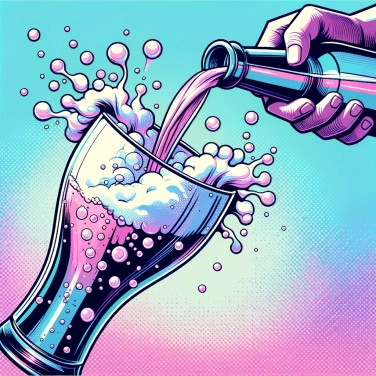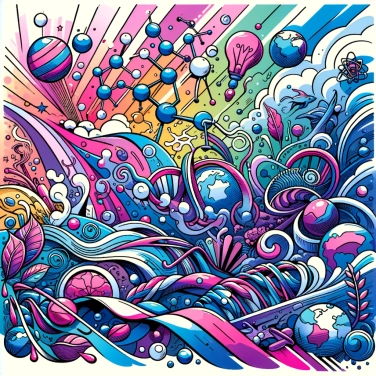In detail, for those interested!
Foaming process
The formation of foam in beer is a fascinating process that results from various factors interacting in a complex way. When beer is poured into a glass, carbon dioxide bubbles released rise to the surface carrying particles of proteins and hops. These bubbles then attach to these particles, forming a stable structure which makes up the foam. The viscosity of the beer and the shape of the glass in which it is served also influence the quality and persistence of the foam.
The responsible elements
When beer is poured and foam forms, several elements come into play to explain this phenomenon. The main elements responsible for the formation of foam are proteins, carbon dioxide (CO2), and impurities present in the beer.
Proteins play an essential role in the stability of beer foam. They mainly come from the barley malt used during the brewing process. These proteins have the ability to form bonds with CO2 molecules released when a bottle is opened or when draft beer is poured. This creates a structure that retains the CO2 bubbles and maintains the foam for a certain period of time.
CO2 is another key element in foam formation. When beer is brewed, CO2 is naturally produced through the fermentation process. When beer is bottled or put under pressure, some of this CO2 remains dissolved in the liquid. When the pressure decreases, for example when a bottle is opened, the CO2 is released in the form of bubbles that rise to the surface, forming the foam.
Lastly, impurities present in the beer, such as yeast or hop residues, can also play a role in foam formation. These particles act as nucleation sites for CO2 bubbles, thus facilitating the formation and stability of the foam.
In summary, the combination of proteins, CO2, and impurities present in beer are the main elements responsible for foam formation when pouring a beer.
Impact of pressure
When beer is poured into a glass, pressure plays an important role in the formation of the foam. Indeed, the pressure exerted on the beer at the time of service will influence the speed at which the carbon dioxide bubbles are released into the liquid. A higher pressure promotes a rapid release of bubbles, which can result in a more abundant foam. On the other hand, a lower pressure can result in a less dense and less persistent foam.
The pressure exerted on the beer can vary depending on several factors, such as how the beer is stored, the temperature at which it is served, or how it is handled at the time of service. A precise control of the pressure can therefore allow for obtaining a consistently high-quality and uniform foam.
It should be noted that pressure is not the only factor influencing foam formation, but it plays a significant role in this complex process. Other elements, such as the composition of the beer, the cleanliness of the glass, or how the beer is poured, also play a role in the quality of the foam that forms on its surface.
The role of proteins
The proteins present in beer play a crucial role in the formation of foam. When beer is poured into a glass, carbon dioxide bubbles form from the particles of dissolved carbon dioxide in the liquid. These bubbles tend to gather around suspended matter particles, such as proteins.
Proteins have the ability to bind to the interface between air and liquid, thus forming a structure capable of trapping carbon dioxide bubbles. This creates a stable and creamy foam that lingers longer on the surface of the beer. Protein molecules act as surfactants, reducing the liquid's surface tension and promoting foam formation.
Furthermore, some proteins have the ability to form hydrogen bonding networks, thereby reinforcing the foam structure. These intermolecular interactions help stabilize gas bubbles and maintain the foam for a longer period. Additionally, proteins can also influence the texture and density of the foam, giving the beer a unique and pleasant mouthfeel.
![Explain why some countries change time zones?]()
![Explain why Alexander the Great refused to wear shoes.]()
![Explain why Alexander the Great always wore an impressive helmet.]()
![Explain why the last Chinese emperor was so young when he came to power?]()










